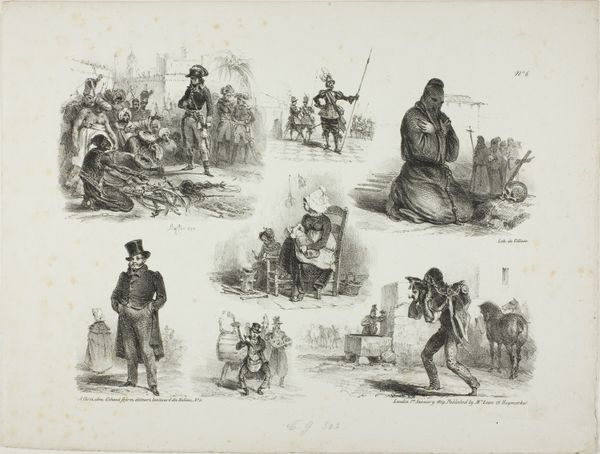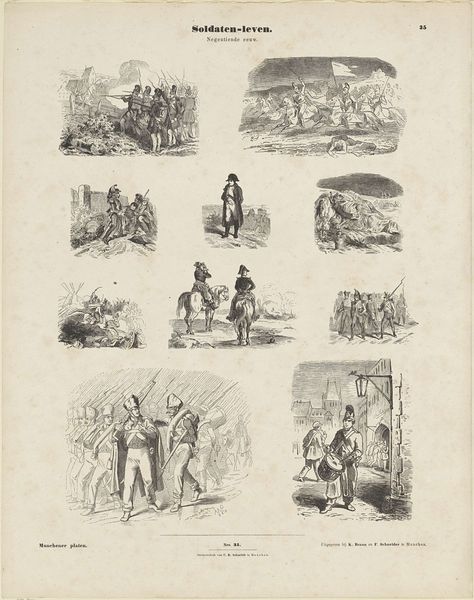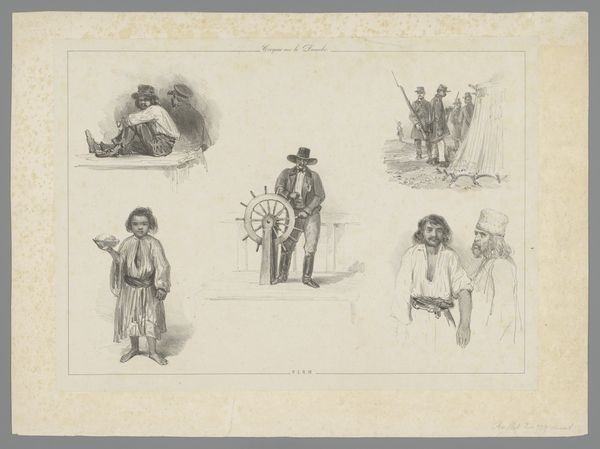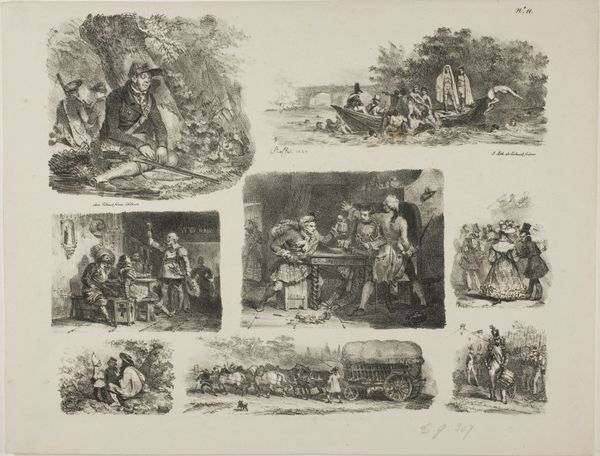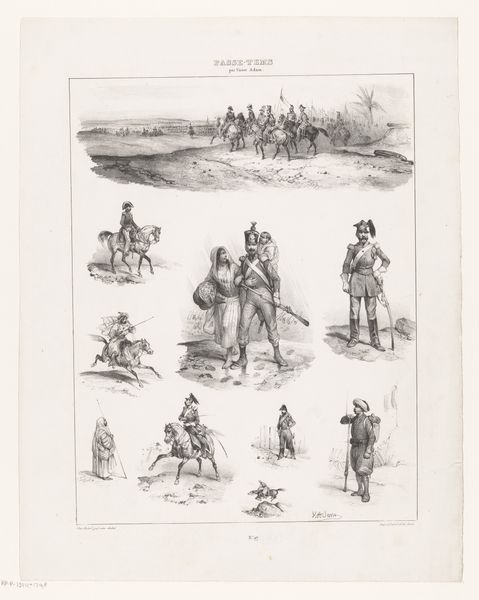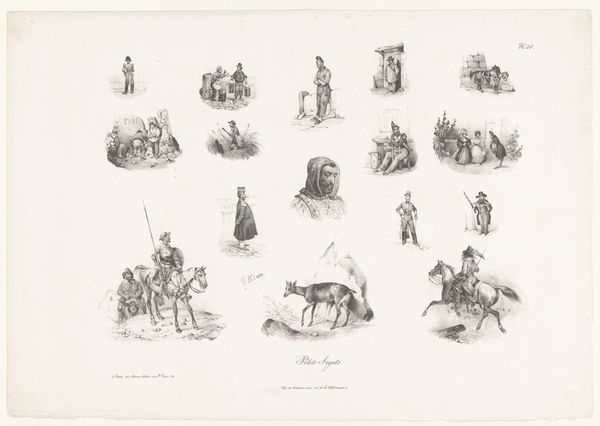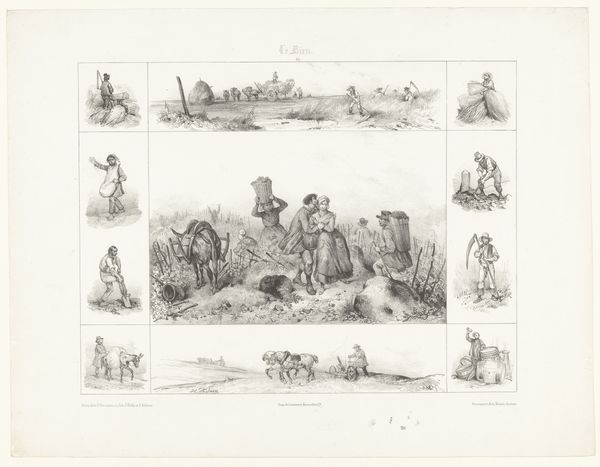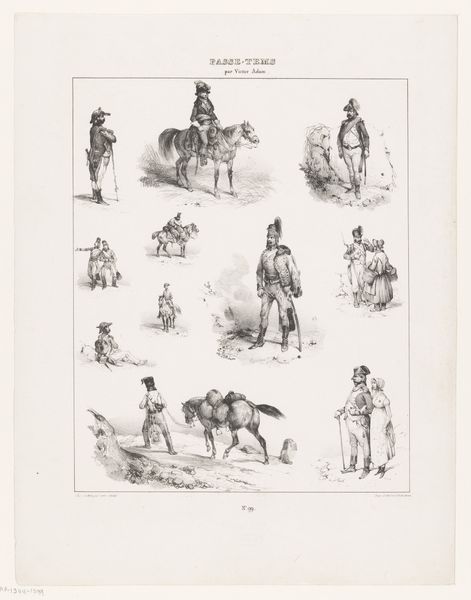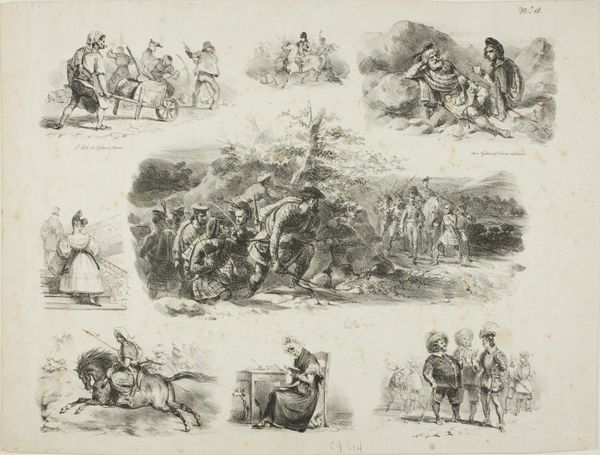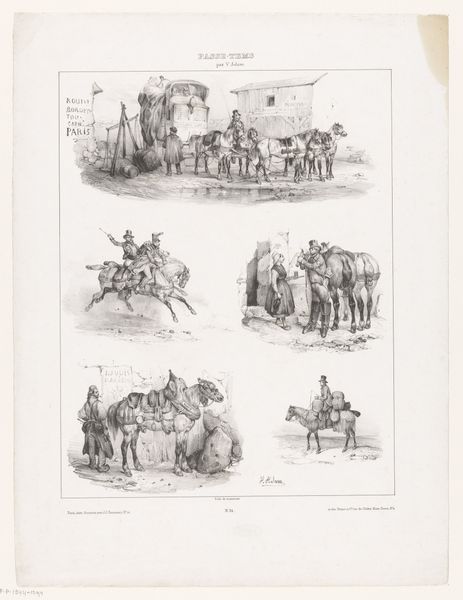
drawing, lithograph, print, paper, ink, pencil, charcoal
#
drawing
#
ink painting
#
lithograph
# print
#
pencil sketch
#
charcoal drawing
#
paper
#
ink
#
pencil
#
charcoal
Dimensions: 230 × 299 mm (image); 295 × 451 mm (sheet)
Copyright: Public Domain
Editor: This is Auguste Raffet’s "Sheet of Sketches," created in 1829 using ink, pencil, charcoal, and lithography on paper. It's filled with various figures and scenes. There's something about the chaotic arrangement of these sketches that makes me curious. What do you see in this piece? Curator: I see a microcosm of 19th-century French society reflected through Raffet's distinct lens. Consider the context: the post-Napoleonic era, marked by social unrest and a yearning for a return to a glorified past, yet grappling with modern changes. Raffet, known for his depictions of military life and popular uprisings, offers us glimpses into these tensions. Notice how the sketches vary in subject matter and tone. We move from seemingly staged military portraits to scenes of everyday life, hinting at broader social issues, perhaps even injustices. Editor: That's interesting! I hadn’t thought about it that way, viewing the juxtaposition as a reflection of social tension. How do the materials play into that interpretation? Curator: The use of lithography, a relatively new and accessible printmaking technique at the time, allowed for wider distribution of Raffet’s images. This democratizing effect is significant. His art wasn't confined to the elite; it reached a broader audience, potentially influencing public opinion and contributing to the political discourse of the time. It's crucial to analyze his art not only for its aesthetic qualities but for its role in shaping cultural narratives. Do you think he’s celebrating or criticizing the figures and events he represents? Editor: That’s a really insightful question; I hadn't thought about it as being ambiguous before! The act of portraying these varied vignettes seems, in itself, like a statement on society's complexity. It avoids taking one definite position, opting instead to show multiple perspectives. Curator: Exactly. And that complexity is where the real power lies, isn't it? By offering us fragments, Raffet invites us to construct our own narratives and challenge existing power structures. I find it incredible to see how artistic intent can transcend temporal distance, sparking crucial discussions to this day. Editor: This has really changed how I look at the piece. Now, it appears less like a collection of drawings and more like a document of socio-political commentary! Thank you!
Comments
No comments
Be the first to comment and join the conversation on the ultimate creative platform.
